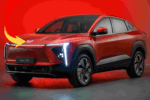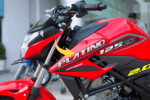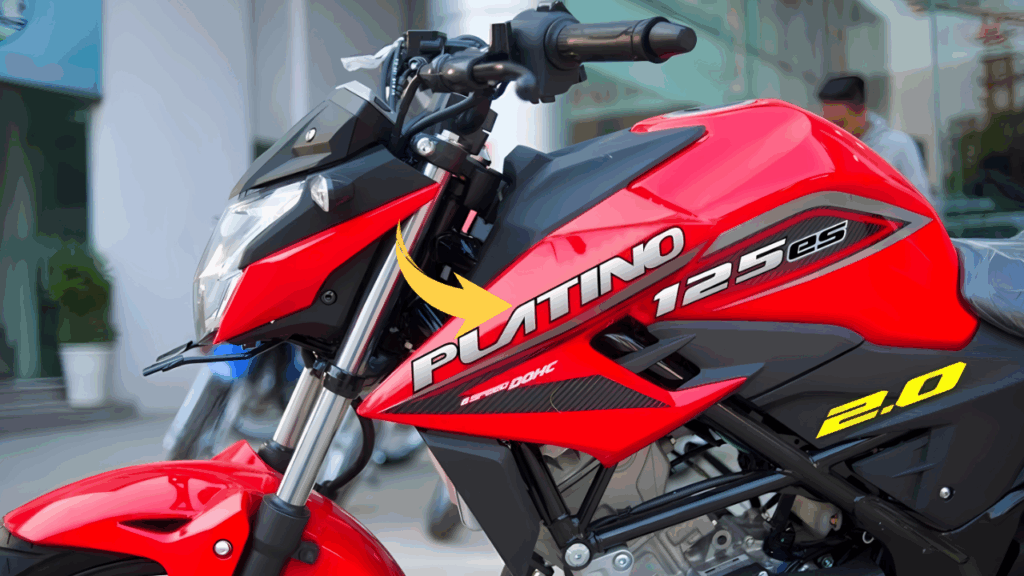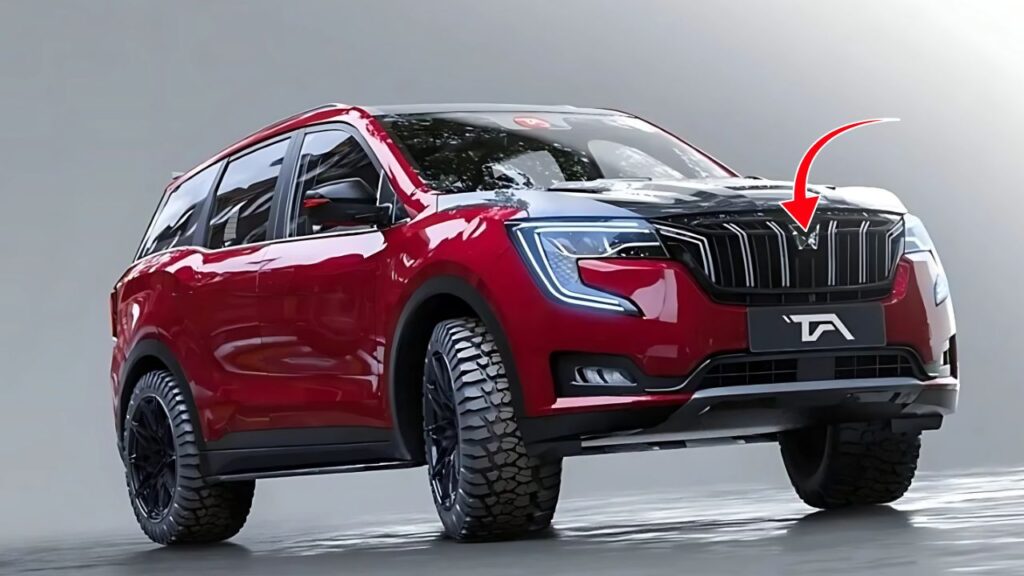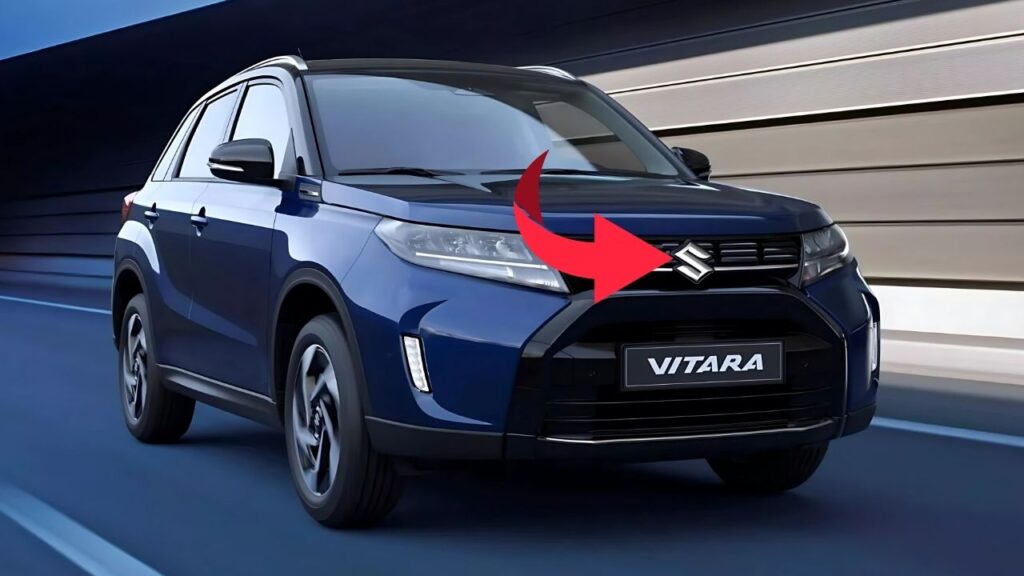Hero Splendor Plus: In the vast landscape of India’s transportation history, few vehicles have left as profound an imprint as the Hero Splendor Plus.
Neither the fastest nor the most technologically advanced motorcycle on the market, the Splendor has nonetheless achieved a level of ubiquity and cultural significance that transcends mere statistics.
With monthly sales regularly exceeding 200,000 units and a cumulative production figure that crossed the 25 million mark years ago, it remains not just India’s best-selling two-wheeler but one of the highest-volume motorcycle models produced anywhere in the world.
The Splendor’s significance, however, cannot be measured by sales figures alone.
Its real impact lies in how this modest 100-110cc commuter has fundamentally altered the mobility patterns of an entire nation, providing affordable, reliable transportation to millions of Indians and serving as an engine of economic opportunity and social transformation across the subcontinent.
Table of Contents
Hero Splendor Plus: Origins and Evolution: From Collaboration to Independence
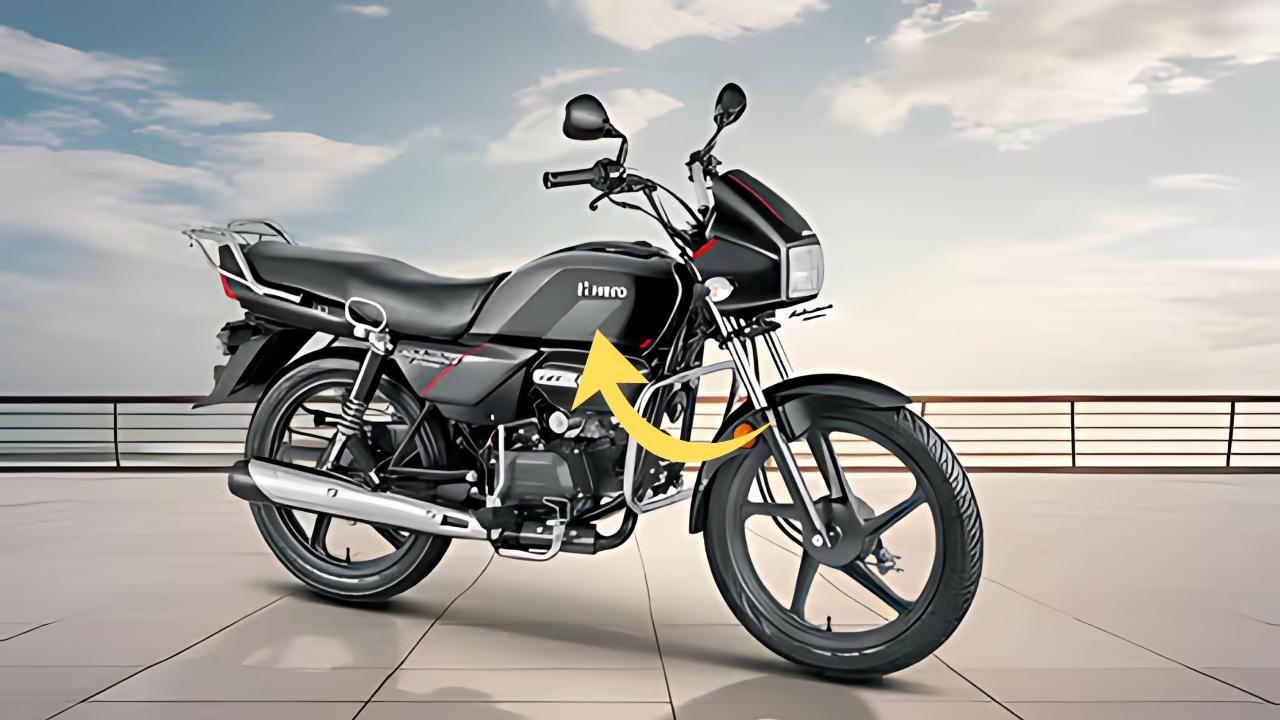
The Splendor’s story begins in the 1980s during the productive collaboration between Hero Group (then Hero Cycles, India’s largest bicycle manufacturer) and Honda Motor Company of Japan.
This partnership, formalized in 1984 as Hero Honda Motors Limited, aimed to combine Hero’s deep understanding of the Indian market and distribution strength with Honda’s engineering expertise and motorcycle manufacturing technology.
The original Hero Honda Splendor, launched in 1994, represented a refinement of the partnership’s earlier success with the CD100.
It retained the four-stroke engine technology that had distinguished Hero Honda’s offerings from the predominantly two-stroke competition but incorporated improvements in styling, comfort, and efficiency that would come to define the Splendor identity.
What made the Splendor immediately distinctive was its perfect alignment with the needs and constraints of the average Indian motorcycle buyer.
The four-stroke engine delivered exceptional fuel economy—a critical consideration in a market where running costs often outweighed purchase price in the ownership decision.
The simple, robust construction promised reliability and low maintenance, while the comfortable riding position and adequate ground clearance were well-suited to India’s varied and often challenging road conditions.
The partnership between Hero and Honda continued to refine the Splendor through multiple iterations, gradually incorporating modest technical improvements while maintaining the core attributes that had made it successful.
The addition of electric start, upgraded suspension components, and enhanced aesthetics kept the model contemporary without fundamentally altering its character or positioning.
In 2011, a significant chapter in the Splendor story unfolded when Hero and Honda dissolved their partnership, with Hero Group acquiring Honda’s 26% stake in the joint venture.
The company was renamed Hero MotoCorp, and questions abounded about whether Hero could maintain product quality and technological relevance without Honda’s expertise. The Splendor became a symbolic test case for this new era of independence.
Contrary to skeptics’ predictions, Hero not only maintained the Splendor’s market position but strengthened it.
The company invested heavily in in-house R&D capabilities, established technical collaborations with firms like Italy’s Engines Engineering and Austria’s AVL, and focused on deepening its understanding of customer needs across diverse Indian markets.
The Splendor Plus, as it was now branded, continued to evolve under Hero’s independent stewardship, incorporating features like i3S (Idle Stop-Start System) technology that improved fuel efficiency further while reinforcing the brand’s combination of affordability and innovation.
Engineering Philosophy: Elegant Simplicity
The technical specifications of the Splendor Plus will never inspire awe among performance enthusiasts. Its air-cooled, single-cylinder engine displaces just 97.2cc (in current form) and produces a modest 8.36 horsepower and 8.05 Nm of torque.
The four-speed gearbox, drum brakes, and conventional suspension are equally unexceptional on paper.
Yet these pedestrian specifications mask an engineering philosophy of elegant simplicity that perfectly addresses the real-world needs of its users.
Every aspect of the motorcycle has been optimized for reliability, efficiency, and ease of maintenance rather than outright performance or technological sophistication.
The engine exemplifies this approach. Its long-stroke configuration prioritizes torque at low RPM over high-end power, delivering excellent tractability in urban traffic and reducing the need for frequent gear changes.
The air cooling system eliminates the complexity, weight, and potential failure points of liquid cooling, while the carburetor (only recently replaced by fuel injection to meet BS6 emission norms) offers simplicity and ease of repair in areas with limited technical infrastructure.
The four-speed transmission provides sufficient ratios for typical usage scenarios without the additional cost and complexity of a five-speed unit.
The widely spaced gear ratios complement the engine’s flexible power delivery, allowing the rider to remain in a single gear through varying traffic conditions—an important consideration for less experienced riders who constitute a significant portion of the customer base.
The chassis design follows similar principles. The double-cradle frame constructed from tubular steel offers excellent durability and straightforward repairability in the event of damage.
The suspension—telescopic forks at the front and dual shock absorbers at the rear—prioritizes comfort and reliability over sophisticated damping characteristics.
Even the 18-inch wheel size represents a careful compromise, offering better ability to handle rough roads than smaller wheels while maintaining lighter steering effort than larger alternatives.
Perhaps most significantly, this engineering approach has been maintained across decades with only incremental refinements rather than fundamental redesigns.
This consistency has created an ecosystem of mechanical familiarity, with roadside mechanics throughout India intimately acquainted with the Splendor’s architecture and able to diagnose and repair issues with minimal specialized tools or diagnostic equipment.
The result is a motorcycle that delivers extraordinary mechanical reliability under challenging conditions.
Stories abound of Splendors accumulating hundreds of thousands of kilometers with only basic maintenance, operating reliably through monsoon floods, desert heat, and Himalayan cold, and serving as trusted workhorses for riders with limited mechanical knowledge or financial resources for repairs.
Design Evolution: Continuity Amid Change
The visual design of the Splendor Plus represents an interesting case study in evolutionary product development. While the motorcycle has undergone multiple styling updates throughout its lifespan, each iteration has maintained a clear visual connection to its predecessors and a distinctly conservative aesthetic that prioritizes broad acceptability over fashion-forward styling.
The earliest Splendor models featured simple, straight lines and minimal decoration—a utilitarian approach that emphasized function over form.
As consumer expectations evolved and competition increased, Hero gradually incorporated more contemporary styling elements: slightly more aggressive tank shrouds, updated graphics, modern paint finishes, and redesigned side panels that gave the motorcycle a fresher appearance without alienating its core audience.
Color and graphics have played a particularly important role in the Splendor’s design strategy. Recognizing that many buyers view their motorcycle as both a practical tool and a source of pride, Hero has consistently offered a wide range of color options that allow for personal expression within the constraints of a fundamentally conservative design.
From vibrant solid colors to more complex two-tone schemes with detailed graphics, these options enable the Splendor to feel contemporary despite its long-established basic architecture.
What’s most remarkable about this design evolution is how it has carefully balanced modernity with familiarity. Each update has been calibrated to make the motorcycle appear sufficiently current to attract new buyers without straying from the visual identity that existing customers associate with the Splendor’s proven reliability and value.
This visual continuity has helped maintain the model’s strong resale value, as even older versions remain recognizably part of the Splendor lineage rather than appearing obsolete.
The interior design elements—instruments, controls, and rider interface—have followed a similar philosophy of gradual evolution.
The instrument cluster has progressed from basic analog displays to include digital elements in current versions, but the layout remains straightforward and legible rather than flashy or complex.
Controls maintain a consistent placement and operation across generations, ensuring that riders can transition between different model years without relearning basic operations.
Cultural Impact: Beyond Transportation
Understanding the Splendor phenomenon requires looking beyond its technical attributes to its profound cultural significance across India.
For millions of families, the purchase of a Splendor represents a pivotal life milestone—often the first motorized vehicle in a household and a tangible symbol of economic progress.
In rural India, where two-thirds of the population resides, the Splendor has transformed mobility patterns and economic opportunities.
For farmers, it provides transport to markets and agricultural supply centers; for small business owners, it enables the delivery of goods and services across wider geographic areas; for students and workers, it expands access to educational institutions and employment opportunities beyond walking or cycling distance.
The motorcycle’s impact on family dynamics has been equally significant. A single Splendor often serves multiple household members for different purposes throughout the day—taking children to school, adults to work, and facilitating shopping and social visits.
In many families, learning to ride the household Splendor represents an important coming-of-age ritual, with skills passed down from parents to children over generations.
This multifunctional utility is reflected in the common sight of Splendors carrying improbable loads and passenger configurations.
From families of four balanced precariously on a single motorcycle to massive bundles of goods strapped to every available surface, the Splendor’s role transcends conventional transportation categories to become an all-purpose mobility solution adapted to each owner’s specific needs.
The Splendor has also played a subtle but important role in changing gender dynamics around mobility in India. While motorcycles were traditionally considered male territory, the Splendor’s approachable character, with its low seat height, lightweight handling, and manageable power, has made it more accessible to women riders.
The increasing visibility of women operating Splendors in both urban and rural settings represents a quiet but significant shift in mobility independence across gender lines.
Perhaps most tellingly, the motorcycle has become such a fixture in Indian life that it features prominently in cultural touchstones from cinema to literature.
It appears not as an object of desire or status (as more expensive vehicles might) but as an authentic background element—a realistic detail that grounds narratives in the everyday reality of contemporary India.
This cultural embedding reflects how completely the Splendor has woven itself into the fabric of Indian life.
Market Position: Defending the Crown
Maintaining market leadership for decades in India’s hypercompetitive two-wheeler segment is no small achievement.
The Splendor has faced waves of challenges from both domestic and international competitors, each attempting to dethrone it with some combination of lower pricing, additional features, or updated styling.
Hero’s strategy for defending the Splendor’s position has been multifaceted. Rather than competing solely on purchase price (where margins would be unsustainable), the company has emphasized total cost of ownership—combining reasonable initial cost with exceptional fuel efficiency, low maintenance requirements, and strong resale value to create a compelling economic proposition for value-conscious buyers.
The distribution network represents another crucial competitive advantage. With over 6,000 touch points across India, including dealerships in remote areas where competitors have limited presence, Hero ensures that the Splendor is available and serviceable even in markets where other brands struggle to establish consistent operations.
Product diversification within the Splendor family has also played an important role in maintaining market relevance. By offering multiple variants with different feature sets and price points—from the basic Splendor Plus to the more premium Splendor iSmart—Hero has created internal segmentation that addresses diverse customer needs while keeping them within the trusted Splendor ecosystem.
Perhaps most importantly, the company has leveraged the immense brand equity built over decades. The Splendor name has become synonymous with reliability and value, creating a powerful halo effect that benefits the entire model family.
For many first-time buyers, particularly in rural and semi-urban areas, the Splendor represents not just a motorcycle but a known quantity—a proven solution endorsed by the experience of family members, neighbors, and colleagues.
Looking Forward: Evolution Amid Transition
As India’s automotive market evolves toward greater electrification and connectivity, the Splendor faces perhaps its most significant adaptation challenge yet.
Hero has approached this transition deliberately, recognizing that their core customers prioritize proven reliability and low operating costs over technological novelty.
The company has already demonstrated its approach through the iSmart variant, which incorporates fuel-saving start-stop technology without fundamentally altering the motorcycle’s character or complicating its operation.
This pattern of selective innovation—adopting new technologies only where they deliver tangible customer benefits without compromising core values—will likely guide the Splendor’s evolution through the coming transition.
Electric variants will inevitably join the lineup as battery costs decrease and charging infrastructure improves.
Hero has already invested significantly in electric vehicle development, but the company’s leadership has been clear that electrification of core products like the Splendor will proceed at a pace dictated by customer readiness and infrastructure reality rather than technological possibility alone.
Whatever form these adaptations take, they will almost certainly maintain the fundamental attributes that have made the Splendor successful: affordability, reliability, efficiency, and straightforward operation.
The model’s history suggests that evolution will continue to be gradual and thoughtful, maintaining continuity with the existing product while incrementally incorporating technologies that enhance its core value proposition.
Hero Splendor Plus: The Extraordinary Ordinary
The Hero Splendor Plus will never inspire the passion associated with performance motorcycles or the technological fascination of cutting-edge electric vehicles.
Its significance lies instead in how thoroughly it has optimized for the actual needs of millions of riders rather than the aspirational desires of a few.
In doing so, it has achieved something far more profound than mechanical excellence or sales success. It has democratized mobility across the world’s most populous democracy, enabling economic opportunity, educational access, and social connection for countless individuals and families.
The true measure of the Splendor’s impact isn’t found in specification sheets or sales charts but in the countless personal stories of the riders for whom it has been a trusted companion—the small entrepreneur whose business grew beyond walking distance, the student who could access better educational opportunities in a neighboring town, the worker who could live where housing was affordable while commuting to where jobs were available.
In these individual transformations, multiplied millions of times across the geography of India, lies the true legacy of this extraordinary ordinary motorcycle—not the fastest, not the most advanced, but perhaps the most consequential two-wheeler of its generation.
